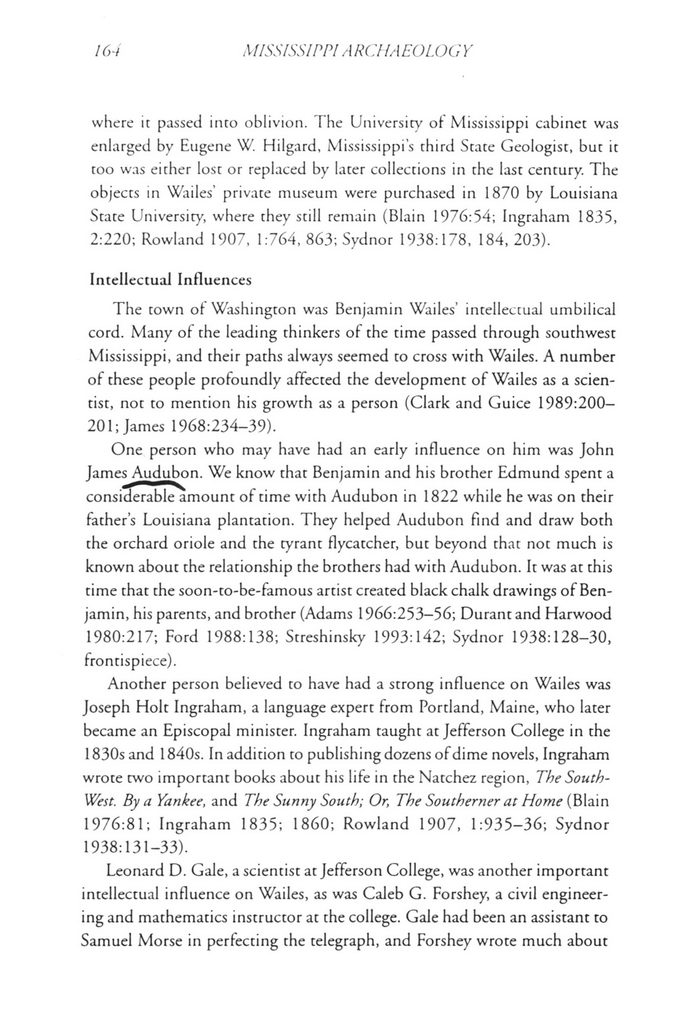This text was obtained via automated optical character recognition.
It has not been edited and may therefore contain several errors.
1(4 MISSISSIPPI A RC11 A EOLQG Y where it passed into oblivion. The University of Mississippi cabinet was enlarged by Eugene W. Hilgard, Mississippi's third State Geologist, but it too was either lost or replaced by later collections in the last century. The objects in Wailes? private museum were purchased in 1870 by Louisiana State University, where they still remain (Blain 1976:54; Ingraham 1835, 2:220; Rowland 1907, 1:764, 863; Sydnor 1938:178, 184, 203). Intellectual Influences The town ot Washington was Benjamin Wailes? intellectual umbilical cord. Many of the leading thinkers of the time passed through southwest Mississippi, and their paths always seemed to cross with Wailes. A number of these people profoundly affected the development of Wailes as a scientist, not to mention his growth as a person (Clark and Guice 1989:200? 201; James 1968:234-39). One person who may have had an early influence on him was John James Audubon. We know that Benjamin and his brother Edmund spent a considerable amount of time with Audubon in 1822 while he was on their father?s Louisiana plantation. They helped Audubon find and draw both the orchard oriole and the tyrant flycatcher, but beyond that not much is known about the relationship the brothers had with Audubon. It was at this time that the soon-to-be-famous artist created black chalk drawings of Benjamin, his parents, and brother (Adams 1966:253?56; Durant and Harwood 1980:217; Ford 1988:138; Streshinsky 1993:142; Sydnor 1938:128-30, frontispiece). Another person believed to have had a strong influence on Wailes was Joseph Holt Ingraham, a language expert from Portland, Maine, who later became an Episcopal minister. Ingraham taught at Jefferson College in the 1830s and 1840s. In addition to publishing dozens of dime novels, Ingraham wrote two important books about his life in the Natchez region, The South-West. By a Yankee, and The Sunny South; Or, The Southerner at Home (Blain 1976:81; Ingraham 1835; I860; Rowland 1907, 1:935?36; Sydnor 1938:131-33). Leonard D. Gale, a scientist at Jefferson College, was another important intellectual influence on Wailes, as was Caleb G. Forshey, a civil engineering and mathematics instructor at the college. Gale had been an assistant to Samuel Morse in perfecting the telegraph, and Forshey wrote much about

Wailes, Benjamin Archeology of Mississippi-08